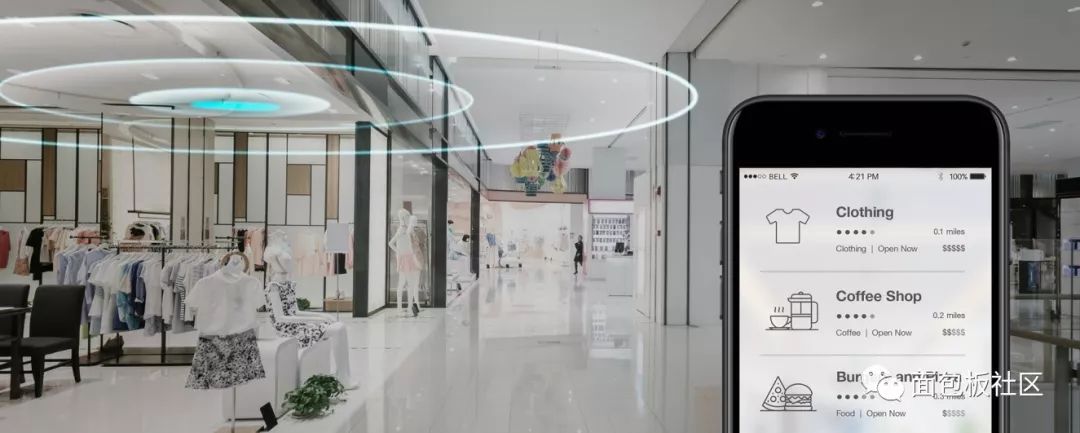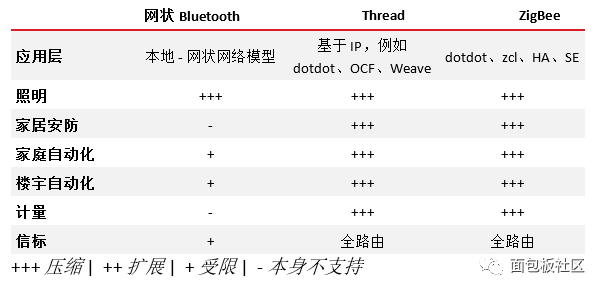In a point-to-point or star network, the signal range is a function of the output power. In order to ensure that the device can operate on the battery long enough, or to increase energy efficiency, the ideal situation is to reduce power consumption and output power. However, despite the reduction in power consumption, the device still needs to be able to communicate and interact with other devices. The transmission distance of each device in the mesh network is shorter, so power consumption is reduced. Since communication is relayed through devices on the mesh network, the overall communication distance of the system can be improved.
Mesh networks also have other communications benefits, such as their ability to dynamically self-heal. For example, if a node in a mesh network fails, communication can be rerouted to improve reliability. Another important benefit of mesh networks is that devices can communicate directly with each other. In many cases, such as a light bulb responding to a switch, this can achieve the fast response desired by consumers.
Mesh Network Effect on Application
With a mesh network, overall system performance and end-user experience can be significantly improved. With building and home automation, devices can communicate directly with each other. The operation of the light bulb switch can be sent directly to the light bulb through the local mesh network without the need for routing communication with the cloud through the gateway.

Figure 1: Comparison of a star network and a Mesh network.
This immediate response can improve the consumer experience. In addition, for some use cases, such as the HVAC system shutting down ventilation in the event of a fire alarm, local communications on the mesh network can ensure proper system operation without relying on cloud connectivity.
The deployment and management of lighting systems can be simplified. The long-distance connectivity provided by mesh networks means that interconnected lights can be deployed far from the hub (compared to star networks). Hubs or gateways can be deployed in one place before deploying interconnected lights. As each lamp is deployed, the communication distance is expanded so that one gateway can effectively cover a larger area.
Managing beacons for the retail market or asset tracking will be easier because there is no need for every beacon to be within the range of the handset. In addition, you can combine features on these areas and device types. For example, interconnected lights can be used not only for automation but also as beacons. This method can increase the functionality and value of electric lights by adding functions such as location services and advertising.

Figure 2: Mesh network application in the retail market.
A variety of wireless protocol cases
Interoperability with already deployed systems is an important consideration. In the residential example, a large number of devices may use ZigBee or Thread to form a mesh network. The combination of gateways or hubs and gateways is likely to have connected these devices to the cloud for more services. The smartphone may also communicate with the cloud and return to the device.
Bluetooth connectivity is required to support smartphones and devices to communicate directly or to support ecosystems such as Apple HomeKit. If all devices support this protocol, Bluetooth can be used in conjunction with another mesh network or on its own as a mesh network. Adding support for multiple protocols in the device can also bring many benefits, such as using a smart phone to set up or debug the device without the need for display on a ZigBee or Thread network.
With Silicon Labs multi-protocol software and hardware, a single product that supports multiple wireless connection protocols can be designed. This can be a connection of multiple protocols on the same device in the field, or it can be a device that can be configured on the spot or in a factory into one of many different wireless protocols. By supporting multiple protocols on the same SoC or pin-compatible SoC, corporate users can flexibly adjust their marketing strategies. With the help of a secure update mechanism, these devices can be updated in the field to add other functions or respond to any changes in the market, such as an ecosystem that is in need of a particular mesh network and is soaring.
Determine the right mesh network technology
For most existing home automation and lighting systems, existing ecosystems and deployments must be considered. For example, to be compatible with Apple HomeKit, even if the device is connected to other devices over a mesh network, it must support Bluetooth connectivity for communication to support Apple HomeKit.
Many existing devices use Zigbee; for new devices based on technologies such as meshed Bluetooth, interoperability policies implemented through terminal devices or gateways that support multiple protocols must be considered. Similarly, different service providers have requirements for specific protocols or multi-protocol support and must be considered when selecting the appropriate connectivity solution.
Connectivity requirements should consider the entire ecosystem, from end devices to any gateway or hub, to the application layer and service providers. Network technologies that do not natively support IP, such as ZigBee and mesh Bluetooth, must first adapt the IP at the gateway. This process involves the mapping of local network addresses and the repackaging of network layer payloads into IP datagrams. In contrast, local networks that support IP itself, such as Thread, can forward and route application payloads without the need for intervention. Encrypted packets on the local network remain secure during end-to-end transmissions.
Comparing mesh network standards
Each mesh network standard provides standards-based support for different device types and applications. ZigBee provides mature application layer support for home automation, lighting and metering, while the first meshed Bluetooth specification focuses primarily on lighting and some home automation support. Thread is the only kind of mesh network technology based on IPv6 among the three mesh network technologies. This provides some unique benefits, such as end-to-end routing and addressability on the same network or across networks, without the need to implement additional translation layers.

Most connected devices benefit from connections to the cloud, enabling data aggregation and other use cases. Bluetooth-enabled, Bluetooth-powered devices can provide connectivity to the cloud through a smartphone or tablet. This of course is a temporary connection because the device will not be able to connect to the cloud to send or receive information when the phone or tablet is not present, so the gateway is required to provide a always-connected experience. ZigBee requires a gateway for cloud connectivity, and Thread has IP-based connectivity, so a full gateway is not required to bridge between mesh networks. With Thread, the border router can achieve a direct communication between the device and the cloud through IP in a more lightweight way.
The theoretical network size based on the addressing scheme used cannot accurately reflect the number of nodes required in the actual implementation of the network. The actual limit depends on many factors, including network topology, packet size, and performance requirements such as throughput and latency. Although ZigBee can be used to deploy a very large commercial network, such as the commercial system of the Aria Hotel in Las Vegas, it has more than 80,000 networked ZigBee devices and multiple subnets, but in actual applications ZigBee devices for each subnet are Limited to more than 100 stations. The Thread 1.1 protocol is optimized for the performance of approximately 250 nodes per network, but because Thread is IP-based, border routers enable the network to be easily expanded and distributed.
With the controlled flooding model in meshed Bluetooth, devices can broadcast to many devices without having to manage the routing table, which becomes very simple and facilitates dynamic use cases where the mesh nodes can move or change frequently. However, for large networks, controlled relays require network planning during installation because not every node can be configured as a relay device, which can result in degraded network performance. Technologies such as ZigBee and Thread have routing and automatic routing table management capabilities that enable more efficient network communications and automatic formation of network and node roles.
The full capabilities of the agreement also depend on the corresponding application layer. Although the Thread protocol does not include the application layer, any IP-based application layer such as dotdot or OCF can be used. Reticulated Bluetooth includes a native application layer called the mesh network model. It is a brand-new application layer with limited support for different device types (compared to ZigBee or Thread support). Reticulated Bluetooth works well with lighting models, but also supports common controls such as on/off, sensors, sliders, power, and battery status, but lacks many dedicated models for home accessories such as door locks, HVAC, or inclusion Operationally defined windows with specific features.
In addition to supporting multiple mesh network protocols, mesh network protocols such as ZigBee can also be combined with Bluetooth low energy to simplify device setup through Bluetooth debugging using smartphones for ZigBee devices or to provide support for Apple Homekit. Bluetooth connectivity.

The combination of mesh Bluetooth and Bluetooth low power provides a unique way to integrate beacons into mesh systems; the Bluetooth SIG is currently building a dedicated beacon management model.
It is of course possible to extend and build custom implementations to support specific device types, but before choosing the protocol and application layer, it is important to be aware of the workload required to do so and the future impact on device interoperability.
to sum up
Each mesh network protocol has technical advantages but needs to consider their market maturity and established deployment. An agreement may not be able to meet the needs of all products or markets.
There are many factors that must be considered for wireless protocols, especially for deployed systems that require interoperability policies implemented through terminal devices or gateways that support multiple protocols. In general, connectivity requirements should always consider the entire ecosystem, from end devices to any gateway or hub, to the application layer and service providers.
The current large number of options can solve the current market demand, but also help plan the future. If multi-protocol software and hardware are used in the design process, a single product that supports multiple wireless connectivity and protocols can be designed to allow end-users to freely adjust and update device connections and use cases in the field based on real-time business requirements.
Ftth Drop Cable Assembly,Ftth Drop Cable Assembly Assembly,Ftth Drop Cable Assembly Adapter,Ftth Drop Cable Assembly Access
Huizhou Fibercan Industrial Co.Ltd , https://www.fibercannetworks.com